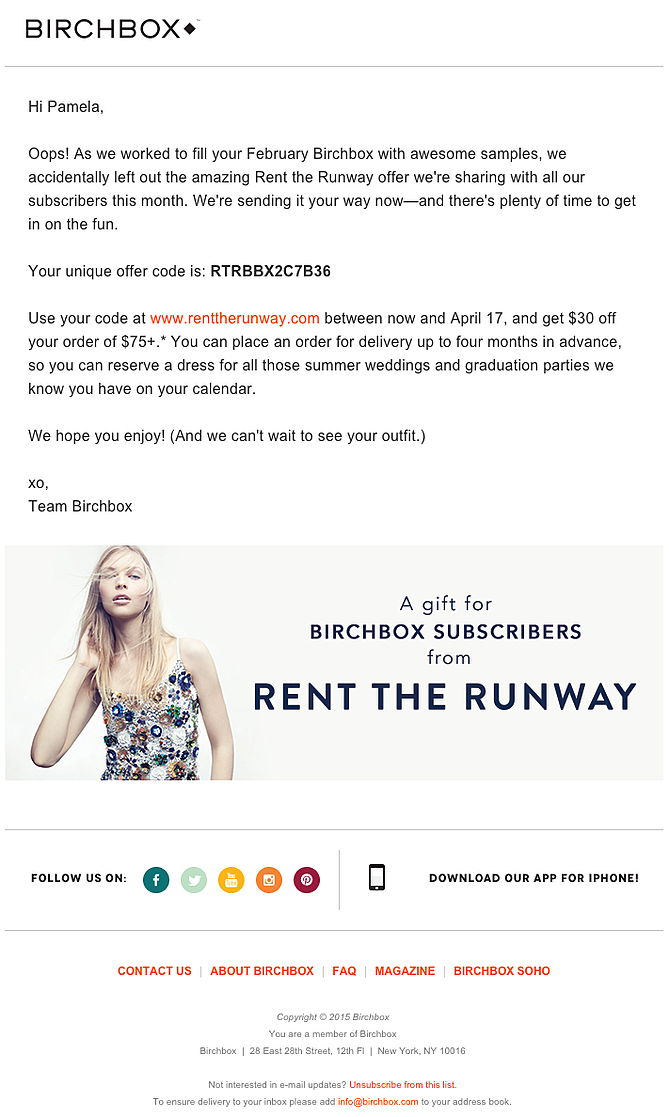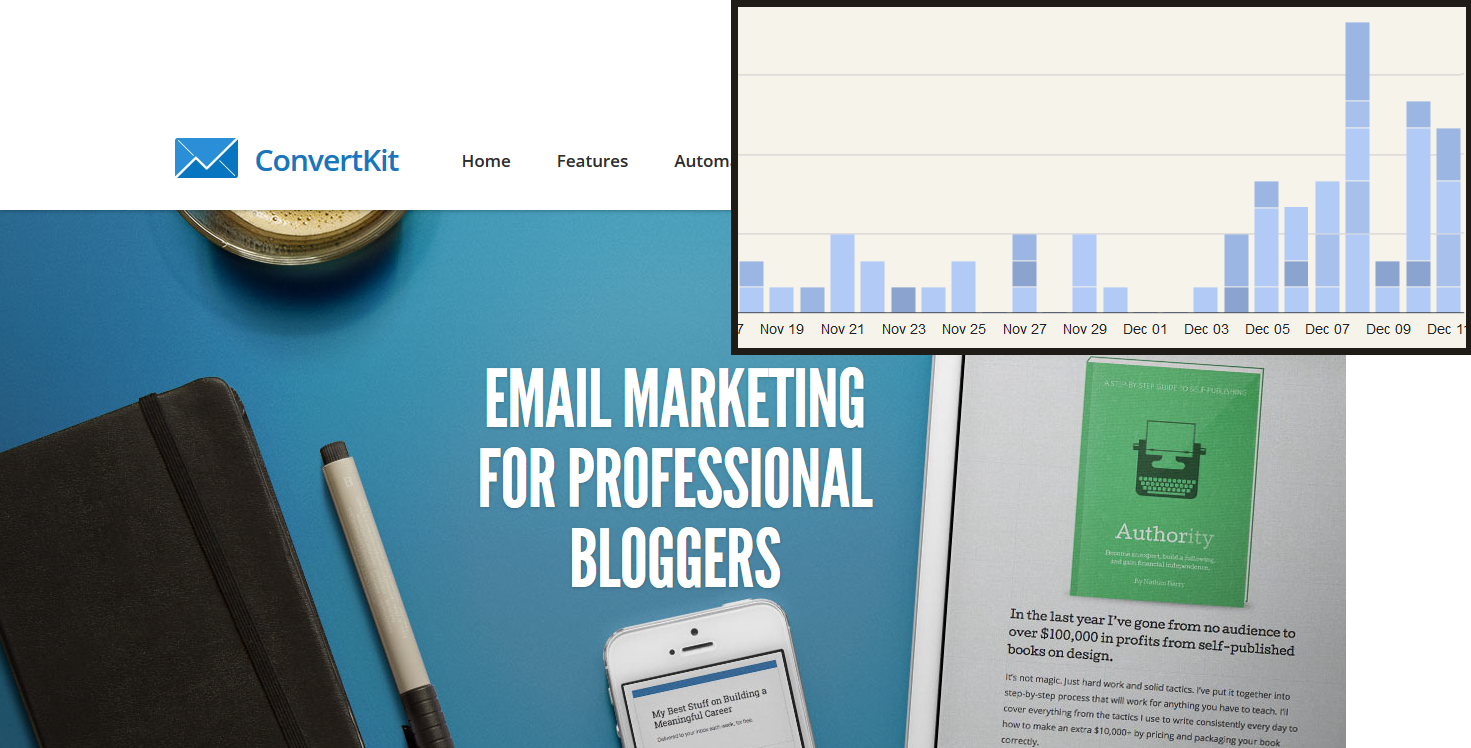There’s nothing I love more than a universal best practice getting unequivocally bashed in by a niche case study.
“Best practices” are your baseline. They are the Wordpess theme template of your marketing efforts. If you stop at best practices, you haven’t really done any marketing yet.
That’s why today, we’re going to be looking at 8 email marketing case studies that contradicted best practices to get better results. We’ll look at why they worked and how they might apply to your business.
1. President Obama’s fundraising team increased revenue by abandoning successful headlines

Split testing is a crucial part of digital marketing success. You see what performs, abandon the losers, and use the winners.
During Barack Obama’s 2nd term presidential campaign, he raised $690 million, primarily via fundraising email campaigns. His marketing team split tested a variety of email headline styles, ultimately identifying causal winners like “I will be outspent”, which raised $2.6 million by itself.
But ultimately, the secret to his campaign’s success was that the marketing team abandoned these headline winners as soon as their performance dropped and came up with new winners.
“…these triumphs were fleeting. There was no such thing as the perfect e-mail; every breakthrough had a shelf life. Eventually the novelty wore off, and we had to go back and retest,’ says Amelia Showalter, digital analytics director.
Remember that the successful popup you split tested a month ago is getting old. It’s time to rethink and retest.
2. Dell increases revenue by 109% using outdated technology

The general tendency in business and marketing is to use newer and newer technology to more effectively illustrate and communicate your brand. But sometimes, older technology and outdated are best suited for your accomplishing your goals.
After struggling to identify an effective method for displaying the functionality of Dell’s new XPS 12 Convertible Ultrabook, the marketing team decided to use an old-fashioned internet staple – the GIF.
Patented in 1985, GIFS are 30+ year old “tech”. They were popularized in an age where delivering video content online was a hassle and a half. And yet, utilizing this old-school image type resulted in a 109% increase in Dell’s email marketing revenue.
3. Hammock increases qualified leads by sending less content

The typical rule of blogging and email marketing is that if you send more content, you’ll get more clicks and ultimately, more revenue. More emails and more posts equals more traffic.
And while this is true, the reality is that most businesses really don’t care about traffic. They care about revenue. They’d take 10 visitors/5 leads over 50 visitors/2 leads any day.
This is the thought process Hammock had in mind when they decided to stop sending so much content. They reduced emails to once every two weeks and reduced email content to just 350 words per email.
And the results? Hammock saw a 48% increase in opens (as expected), but more importantly, a significant increase in lead quality. The right people started contacting them after reading their emails. And that’s really the entire purpose of an email marketing campaign.
4. GetResponse study shows email personalization can be harmful

Email segmentation and personalization are now industry standards for successful email marketers, and it’s easy to see why. People like to be addressed and marketed to as unique individuals.
But personalization comes with a cost. GetResponse found that personalize emails “averaged 26% higher complaints and over 71% higher unsubscribe rates than emails without personalization. “ So the question becomes, how do you take advantage of personalization benefits while mitigating the downsides?
The answer for some industries is a sort of middle ground. Try segmenting by interest without addressing by name. Doggyloot, by the way used this strategy to increase CTR by 750%.
5. Birchbox increases discount exposure by “forgetting” to include the discount

When offering a discount, it’s typically a good idea to actually mention the discount offer – usually prominently and above the fold.
Birchbox opted to take a different, sneakier route and pretended to forget including the discount in their newsletter, providing them with an excuse to send out a discount-only email that grabbed attention.
Editorial Note: Wishpond has actually tried the “Oops” email ourselves, and found really positive results. It’s well worth a test!
6. DaVita Kidney Care increases open rates by adding symbols

One of the standard pieces of advice you’ll find in marketing email guides is “don’t use symbols”.
Why? I don’t know, but apparently it’s bad news.
DaVita Kidney Care decided to be a rebel and try out some symbols anyway. The result? A consistent 1.5% open rate increase every time they sent out emails. Now, 1.5% really isn’t much, but the key here is that, despite everyone saying symbols will negatively impact your campaigns:
There was no hit to the reputation of the company or inbox placement
Sends were not flagged as “junk” by any major email provider
There was no noticeable movement in unsubscribes or abuse rates
In other words, the “best practice” turned out to be essentially a wive’s tale, at least for Davita Kidney Care.
7. HubSpot Increases Deliverability By Deleting 250,000 Subscribers

The whole point of email list building is typically to… ya know… build your list. This usually looks like adding as many relevant subscribers as possible. Email marketing is a percentages game, so the more people on your list, the more people you have a chance of connecting with when it’s time to sell.
And that’s why HubSpot’s decision to delete 250k subscribers flies right in the face of best practices. Most people (myself included) would be thrilled to have a list half the size of what HubSpot deleted.
But here’s why it makes sense…
A subscriber who never opens your emails might as well not be a subscriber. You are getting ZERO benefit from them being on your list. So that just leaves the cost. What is the cost of having that subscriber on your list?
You are paying your email service provider to hold and deliver to that email address – not a big deal for a few hundred non-responders, but a significant cost as you get into the tens of thousands.
You are potentially hurting your ability to deliver to actual subscribers. Servers delivering tons of non-opens can marked by email providers as spam senders.
So what should we do when we have something providing zero benefit and adding costs? Eliminate it.
8. Brazen Church gets 400 subscribers from one post without offering a lead magnet

One of the typical mantras you hear these days is that to get subscribers, you need to offer something special – some form of lead magnet. Content is a dime a dozen, so if you don’t mandate an email address in exchange for something unique, people won’t give one to you.
To be honest, this is usually true, but after getting Brazen Church 400 subscribers from one post with no lead magnet, I’m willing to say it’s not always true.
They key was identifying, creating, and promoting the type of content people wanted but couldn’t find anywhere else. Since we didn’t have any lead magnets initially, we turned the desired content into a two part series and simply informed readers at the end of part 1 that we would email them part 2 if they entered their email address.
The result? 400 email subscribers, which more than doubled the blog’s existing subscriber count. Great content – and I mean truly great, can’t-be-found-anywhere-else content – can get it’s own results in the right scenarios.
Conclusion
Email marketing can reap major profits if done correctly, but “done correctly” will look different for each business. It’s always import to rethink and retest, whether you’re struggling to get results or on a 3-year winning streak.
About the author:

Jacob McMillen is a professional copywriter, email marketer and content strategy consultant. He enjoys laughing at his own jokes and pretending to think in his spare time. Follow him on Twitter @jmcmillen89.

